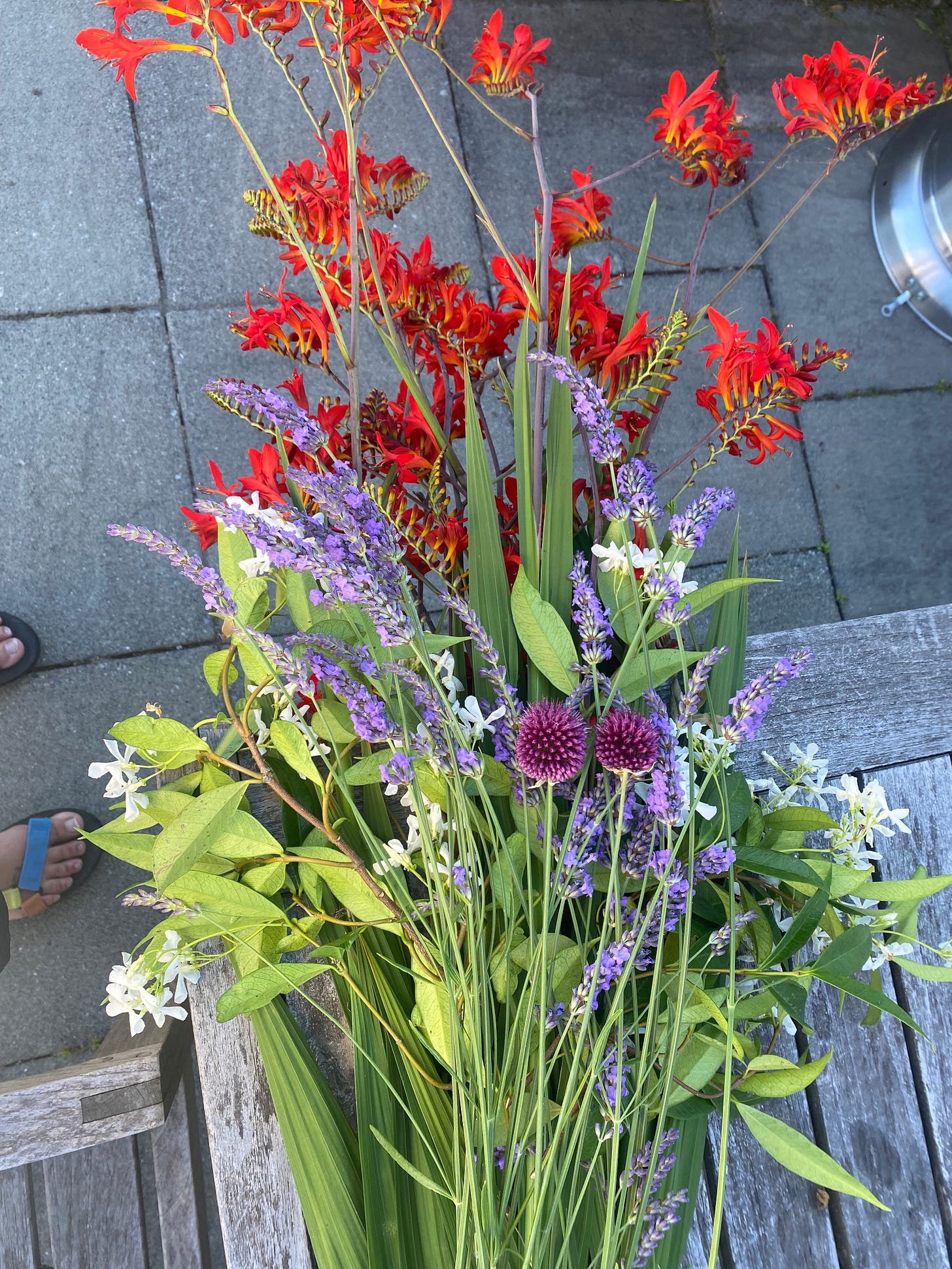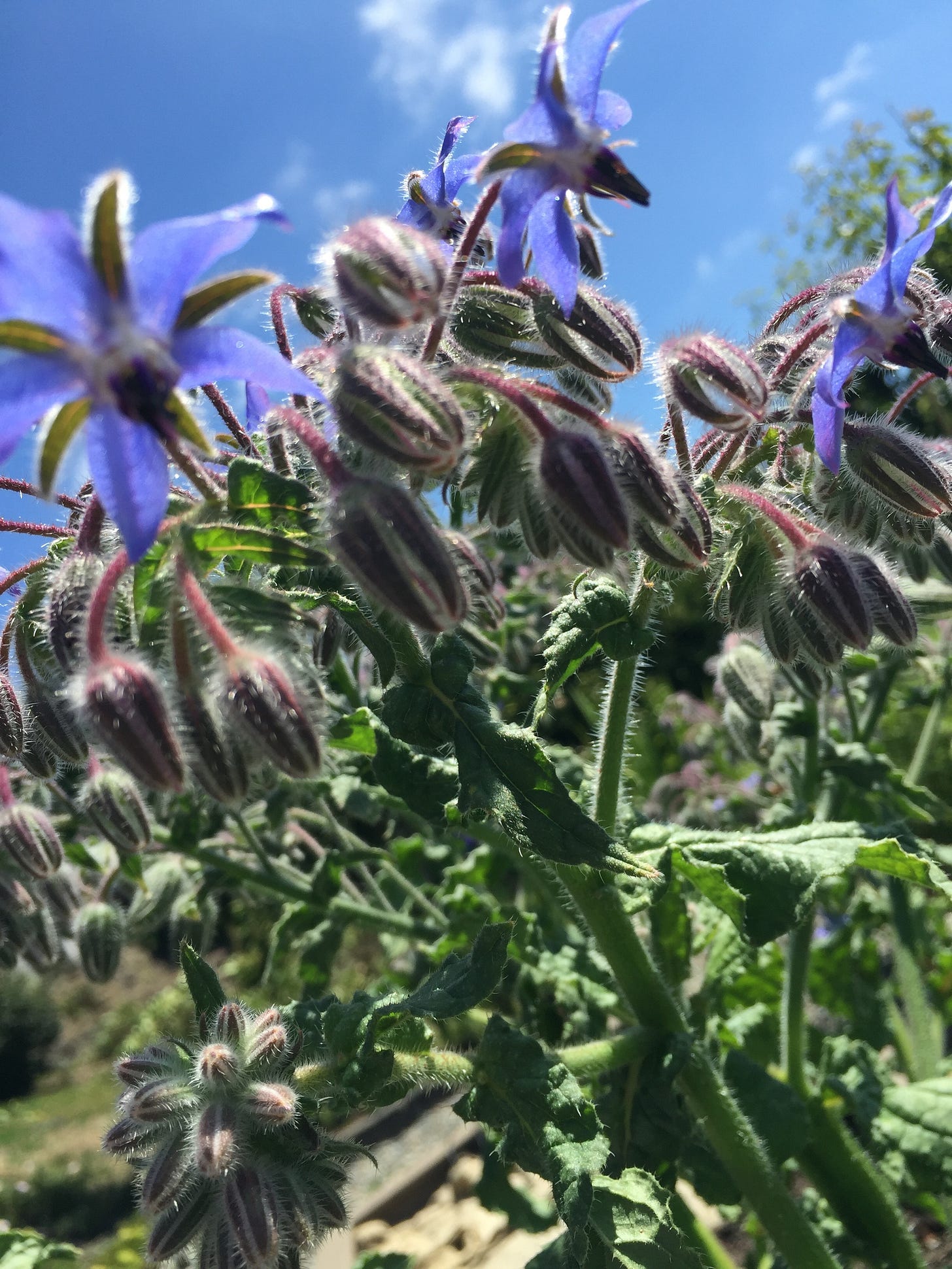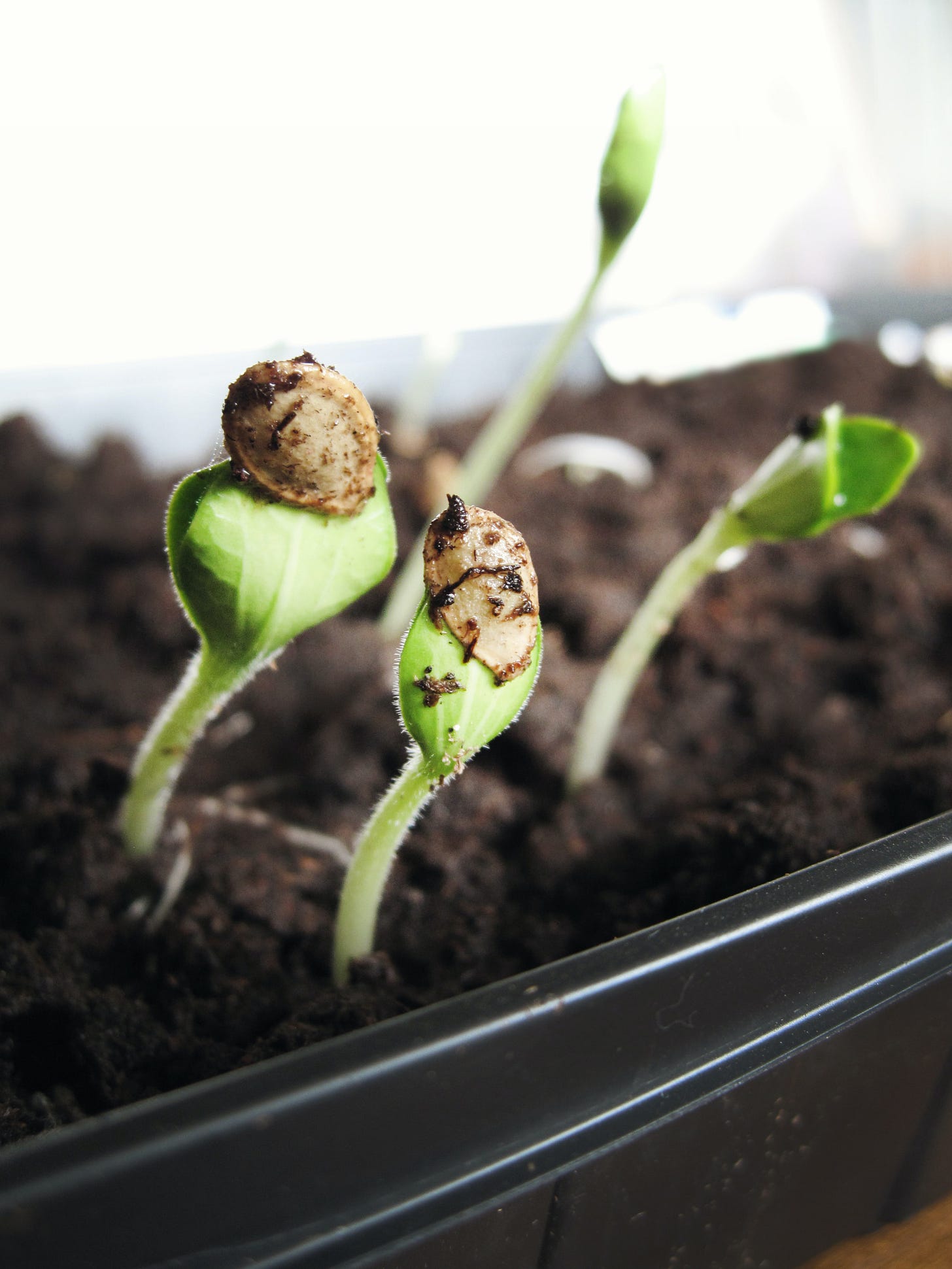What to Plant Now: The Floral Edition
Tips & Tricks for a Backyard Flower Garden
I’ve been wanting to grow flowers this year, and while I’m in an apartment and kind of stuck with “bulbs in vases,” it reminded me to reach out to this community and share some info on what you can plant RIGHT NOW so your house is full of blooms all year long.
Read on for some tips how and what to grow this year for your backyard flower farm. And feel free to reply or comment with any other garden questions you have.
Happy soon-to-be April!
oxo amyp
It’s Hot Then It’s Cold!
Let’s hope it stays warm and storms stay away. With the last few days of sunshine and warm air, it’s definitely time to get some bulbs and seeds in the garden. Whether you're a beginner or an experienced gardener, these tips and guidelines for getting started with a mini flower farm will help you know when and what to plant in your garden this season.
Local Flower Farm Shares Tips
Sara Gainey from The Rookery, a local Seattle Flower Farm with flower beds in her southeast facing property, is a great go-to source for seasonal advice. Nestled under a heron rookery, Sara has been growing for several years, and has an excellent sense of what to grow and how.
“The next few weeks are a great time to start direct-seeding some of my favorite flowers to enjoy throughout the spring and summer.” At the moment, she’s planting directly into the ground: snapdragons, foxglove, artichoke (“I love using these in bouquets!” says Gainey), sweet peas, nigella, and delphinium. These are a good option for direct sowing.
April is a great month for planting pretty much anything, and while you can start some of these seeds inside to plant out later, if your property gets consistent sunlight you can also plant zinnias, sunflowers, dill, cosmos, “and my all time favorite: corn cockle,” says Gainey.
“What I love most about a lot of these flowers is they're ‘cut and come again’ flowers, which means the more you harvest the more they grow, particularly zinnias and cosmos. They add so much character to any garden and will really keep giving throughout the season whether you leave them to be enjoyed in the garden or snip them for a bouquet.”
All of these flowers can be found in The Rookery’s flower subscriptions, along with many other varieties as the seasons change. This subscription service provides regularly delivered, locally grown flowers to your doorstep, or let’s you send to a friend. She also hosts floral design workshops throughout Seattle and has an upcoming April workshop at Casa di LaValle.
Sara’s Flower Growing Tips
Best Time to Start Seeding: The next week or two is an ideal for direct-seeding flowers like sweet peas and nigella for spring and summer blooms.
Indoor Seeding & Transplanting: Flowers like zinnias, sunflowers, dill, cosmos, and corn cockle can be in April, or started indoors now and transplanted later if you have shady garden beds.
"Cut and Come Again" Flowers: Zinnias and cosmos thrive with regular harvesting, continuously producing fresh blooms throughout the season.
Direct Planting Now: Flowers like snapdragons, foxglove, artichoke, sweet peas, and delphinium can be planted directly into the ground now.
Flower Subscription & Workshops: Sara offers a flower subscription service for fresh, locally grown flowers and hosts floral design workshops in Seattle, with limited spots available.
For more details, visit: The Rookery Flower Farm
We hosted another flower farmer, Agnes Cwalina a few years back, and created a cheat sheet that I’m opening up so anyone can download. Here are some top tips from that convo. (Paid Subscribers can still access the link and watch the Master Class.)
Cool Season Annuals: Early Bloomers
Planting Time: Early spring (March-April) [and autumn (September-October) - mark your calendars!]
Blooming Period: June-July
Examples: Sweet peas, bachelor buttons, larkspur, bells of Ireland
Key Takeaways:
Prefer temperatures between 50-70°F
Can tolerate light frost
Can be directly sown or started indoors
"Cool season annuals are the first to bring color to your garden in spring."
Warm Season Annuals: Summer Stars
Planting Time: Around Mother's Day (late May-June)
Blooming Period: Late July-October
Examples: Zinnias, sunflowers, marigolds, Cosmos
Key Takeaways:
Plant when soil consistently reaches 50°F
Avoid planting too early to prevent frost damage
Expect bold, vibrant colors
"Warm season annuals will light up your garden with vibrant colors all summer long."
Strategies for Continuous Bloom: Keep Your Garden Flourishing
Tips:
Start some seeds indoors to get a head start
Plant successive batches of seeds every 2-3 weeks
Choose varieties with different bloom times
Include perennials and foliage plants to fill gaps between annual blooming periods
Key Takeaways:
Stagger planting times for continuous bloom
Use a mix of annuals and perennials
Plan for different bloom periods
With a strategy in place, you can enjoy a garden that blooms from spring through late autumn. Make sure to mark you calendars and get things in the ground stat - Mother Nature waits for no man.
Preparing Gardening Beds: Setting the Foundation
Need help getting garden beds started? Here’s a fast, easy plan to prep your soil and garden beds.
Steps:
Remove existing grass/ground cover
Use cardboard or burlap as initial ground cover
Add wood chips for mulching pathways
Prevent soil erosion with cover crops in winter
Key Takeaways:
Ensure soil temperature is consistent (around 50°F)
Check soil moisture before planting
Plan bed layout considering sun exposure and directional planting
Proper bed preparation is key to a successful garden, and good news - you really only have to do it once! For years to come, you can use this same bed, as long as you weed regularly, rotate crops, and a do a bit of annual maintenance.
Fertilizing and Deadheading Flowers: Promote Continuous Blooming
Want to keep blooms going for longer? Of course you do. Here are some basic but important ways to care for your flowers, so they bloom again and again. Consistent fertilizing and deadheading will keep your garden blooming all season.
Fertilizing: Use a more bloom fertilizer (0-10-10) with higher phosphorus and potassium, apply every 2-3 weeks during the growing season
Deadheading: Regularly remove spent blooms before they go to seed, cut flowers at the right stage of harvest (before pollen formation)
Key Takeaways:
Use bloom-promoting fertilizers
Deadhead regularly to encourage more flower production
Harvest flowers in the coolest part of the day
Challenges & Solutions: Overcoming Common Gardening Obstacles
These were some challenges gardeners in yoru community faced - bunnies, fencing, and more. Read on for common pitfalls and a handful of solutions. While no perfect solution exists, gardeners can mitigate challenges through multiple strategies and continuous learning. And remember - you can always hit me up! I’m happy to give advice anytime.
Challenges:
Increasing bunny population in Seattle
Rabbits eating garden plants
Difficulty finding effective and aesthetically pleasing garden fencing
Protecting garden beds from wildlife
Solutions:
Fencing Options: Metal stakes with symmetrical square fencing, plastic netting with metal stakes, raised bed fencing with wire cutouts
Bunny Deterrence Methods: Cats as natural predators/deterrents, potential use of cat litter around garden beds, temporary fencing solutions
Gardening Strategies: Waiting to put seedlings out until proper protection is in place, timing of planting (e.g., potatoes can go in this week), removing lawn and creating farm-style rows for gardening
Information Sharing: Using Instagram (specifically @flowers.urban) for gardening tips, sending out newsletters with gardening advice, sharing real-time gardening experiences and challenges
Top 3 Takeaways for Gardeners
Harvest Timing is Critical
Harvest flowers before pollen formation
Cut in the coolest part of the day (early morning or late afternoon)
Different flowers have optimal harvest stages (e.g., lilacs when 1/3 of florets are open)
Fertilization Matters
Use more bloom fertilizer (0-10-10) to promote flowering
Apply every 2-3 weeks during growing season
Avoid high nitrogen fertilizers that encourage leaf growth over flowers
Continuous Blooming Requires Active Management
Deadhead regularly to encourage more flower production
The more you cut, the more flowers will bloom
Remove spent blooms before they go to seed
Happy Gardening!
Holler with questions - OXO amyp 👩🏽🌾





Yay flowers! Is the newsletter back for this summer?